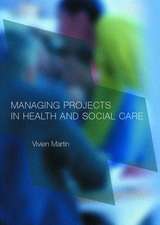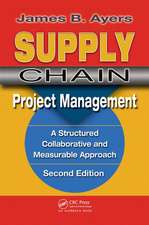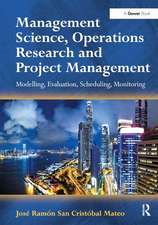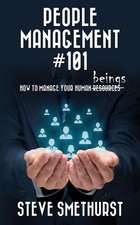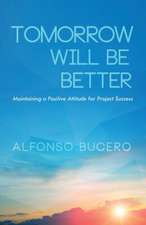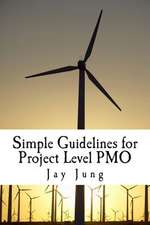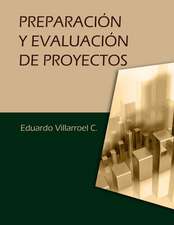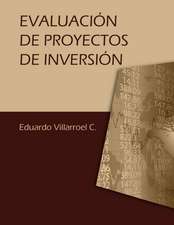Introduction to Construction Project Engineering
Autor Giovanni C. Migliaccio, Len Holmen Limba Engleză Hardback – 27 mar 2018
The textbook is structured into four sections:
- Section A: Introductory Concepts
- Section B: Field Engineering
- Section C: Office Engineering
- Section D: Advanced Project Engineering
| Toate formatele și edițiile | Preț | Express |
|---|---|---|
| Paperback (1) | 589.40 lei 6-8 săpt. | |
| CRC Press – 27 mar 2018 | 589.40 lei 6-8 săpt. | |
| Hardback (1) | 1174.70 lei 6-8 săpt. | |
| CRC Press – 27 mar 2018 | 1174.70 lei 6-8 săpt. |
Preț: 1174.70 lei
Preț vechi: 1432.56 lei
-18% Nou
Puncte Express: 1762
Preț estimativ în valută:
224.79€ • 240.37$ • 187.42£
224.79€ • 240.37$ • 187.42£
Carte tipărită la comandă
Livrare economică 17 aprilie-01 mai
Preluare comenzi: 021 569.72.76
Specificații
ISBN-13: 9781138736559
ISBN-10: 1138736554
Pagini: 314
Ilustrații: 50
Dimensiuni: 189 x 246 x 19 mm
Greutate: 0.77 kg
Ediția:1
Editura: CRC Press
Colecția Routledge
ISBN-10: 1138736554
Pagini: 314
Ilustrații: 50
Dimensiuni: 189 x 246 x 19 mm
Greutate: 0.77 kg
Ediția:1
Editura: CRC Press
Colecția Routledge
Public țintă
UndergraduateCuprins
Preface; Section A: Introductory concepts; Chapter 1: Introduction; 1.1 The built environment; 1.2 Built environment industries; 1.3 The built environment by functional role and occupation; 1.4 The built environment by project type; 1.5 Book overview; 1.6 Summary; 1.7 Review questions; Chapter 2: Built environment projects; 2.1 Introduction; 2.2 Evaluating project success; 2.3 Project Phases; 2.4 Impact of early decisions on later expenditures; 2.5 Project engineering applications; 2.6 Summary; 2.7 Review questions; 2.8 Exercises; Chapter 3: Participants to built environment projects; 3.1 Introduction; 3.2 Organizations; 3.3 Business legal status; 3.4 Individuals; 3.5 Summary; 3.6 Review questions; 3.7 Exercises; Chapter 4: Project delivery; 4.1 Introduction; 4.2 Project delivery methods; 4.3 Project delivery dilemmas; 4.4 Project delivery features; 4.5 Project finance features; 4.6 Project engineering applications; 4.7 Summary; 4.8 Review questions; 4.9 Exercises; Chapter 5: Procurement and contracting; 5.1 Introduction; 5.2 Procurement overview; 5.3 Procurement selection methods; 5.4 Contracting overview; 5.5 Construction contract documents; 5.6 Prime contracts; 5.7 Subcontracts; 5.8 Standard forms of agreement; 5.9 Types of construction contracts; 5.10 Project engineering applications; 5.11 Summary; 5.12 Review questions; 5.13 Exercises; Chapter 6: Introduction to estimating, scheduling, and project controls; 6.1 Introduction; 6.2 Estimating; 6.3 Scheduling; 6.4 Project controls; 6.5 Project engineering applications; 6.6 Summary; 6.7 Review questions; 6.8 Exercises; Section B: Field Engineering; Chapter 7: Safety control and reporting; 7.1 Introduction; 7.2 Project-specific safety planning; 7.3 Safety control; 7.4 Safety reporting; 7.5 Use of technology; 7.6 Project engineering applications; 7.7 Summary; 7.8 Review questions; 7.9 Exercises; Chapter 8: Production control and reporting; 8.1 Introduction; 8.2 Cost control; 8.3 Schedule control; 8.4 Use of technology; 8.5 Project engineering applications; 8.6 Summary; 8.7 Review questions; 8.8 Exercises; Chapter 9: Quality control and reporting; 9.1 Introduction; 9.2 Project-specific quality control planning; 9.3 Implementation of the quality control plan; 9.4 Quality control reporting; 9.5 Use of technology; 9.6 Project engineering applications; 9.7 Summary; 9.8 Review questions; 9.9 Exercises; Section C: Office engineering; Chapter 10: Design review; 10.1 Introduction; 10.2 Design review during pre-construction; 10.3 Design review throughout construction; 10.4 Incorporation of design changes; 10.5 Use of technology; 10.6 Project engineering application; 10.7 Summary; 10.8 Review questions; 10.9 Exercises; Chapter 11: Project documentation; 11.1 Introduction; 11.2 Submittals; 11.3 Superintendent’s daily diary; 11.4 Meeting notes; 11.5 Record documents; 11.6 Use of technology; 11.7 Project engineering applications; 11.8 Summary; 11.9 Review questions; 11.10 Exercises; Chapter 12: Cost engineering; 12.1 Introduction; 12.2 Integration of cost, time, quality, and safety goals into construction work; 12.3 Earned value management; 12.4 Home-office reporting; 12.5 Use of technology; 12.6 Project engineering applications; 12.7 Summary; 12.8 Review questions; 12.9 Exercises; Chapter 13: Sustainable built environment; 13.1 Introduction; 13.2 Defining sustainability; 13.3 Sustainable built environment; 13.4 Roles and responsibilities of project parties; 13.5 Sustainability rating and certification systems; 13.6 Green material and product certifications; 13.7 Environmental project permitting; 13.8 Project engineering applications; 13.9 Summary; 13.10 Review questions; Chapter 14: Close-out; 14.1 Introduction; 14.2 Close-out planning; 14.3 Close-out implementation; 14.4 Project engineering applications; 14.5 Summary; 14.6 Review questions; 14.7 Exercises; Chapter 15: Modeling project documents; 15.1 Introduction; 15.2 From computer-aided design to full digital modeling of project documents; 15.3 Building information modeling; 15.4 Civil information modeling; 15.5 Markup and collaboration software; 15.6 Project engineering applications; 15.7 Summary; 15.8 Review questions; Chapter 16: Cost and schedule updates; 16.1 Introduction; 16.2 Cost updating; 16.3 Schedule updating; 16.4 Home-office reporting; 16.5 Project engineering applications; 16.6 Summary; 16.7 Review questions; 16.8 Exercises; Section D: Advanced project engineering; Chapter 17: Cost estimating; 17.1 Introduction; 17.2 Estimating risk and strategy; 17.3 Types of cost estimates; 17.4 Process; 17.5 Estimate summary; 17.6 Use of technology; 17.7 Project engineering applications; 17.8 Summary; 17.9 Review questions; 17.10 Exercises; Chapter 18: Planning and scheduling; 18.1 Introduction; 18.2 Planning; 18.3 Schedule types; 18.4 Traditional top-down scheduling; 18.5 Collaborative approach; 18.6 Use of technology; 18.7 Project engineering applications; 18.8 Summary; 18.9 Review questions; 18.10 Exercises; Chapter 19: Procurement management; 19.1 Introduction; 19.2 Risk management; 19.3 Types of subcontracting; 19.4 Subcontractor selection; 19.5 Subcontract management; 19.6 Supplier management; 19.7 Project engineering applications; 19.8 Summary; 19.9 Review questions; 19.10 Exercises; Chapter 20: Managing changes; 20.1 Introduction; 20.2 Types of Changes; 20.3 Change order sources; 20.4 Change order process; 20.5 Pricing change orders; 20.6 Contract issues; 20.7 Claims; 20.8 Project engineering applications; 20.9 Summary; 20.10 Review questions; 20.11 Exercises; Chapter 21: Managing project risks; 21.1 Introduction; 21.2 Risk management process; 21.3 Transferring or sharing risks; 21.4 Project engineering applications; 21.5 Summary; 21.6 Review questions; 21.7 Exercises; Chapter 22: Introduction to construction project management; 22.1 Introduction; 22.2 Procurement and construction contracts; 22.3 Estimating and scheduling; 22.4 Subcontractor and supplier management; 22.5 Progress payments; 22.6 Project controls; 22.7 Change orders and claims; 22.8 Close-out; 22.9 Introduction to construction project leadership; 22.10 Summary; 22.11 Review questions; 22.12 Exercises; Appendices; A - Case Studies; B - Abbreviations; C - Glossary; Index
Descriere
This textbook fills an important gap in the literature and prepares construction engineering and built environment students for their first experience of the job site. It integrates conceptual and hands-on knowledge to introduce students to the construction process and familiarise them with the procedures and activities they need to operate as a project engineer during their summer internship and immediately after graduation. It emphasises field tasks, case studies, questions and exercises from civil works and commercial building sectors. An ideal textbook for courses on Construction Engineering, Civil and Architectural Engineering and Construction Management degree programs.

